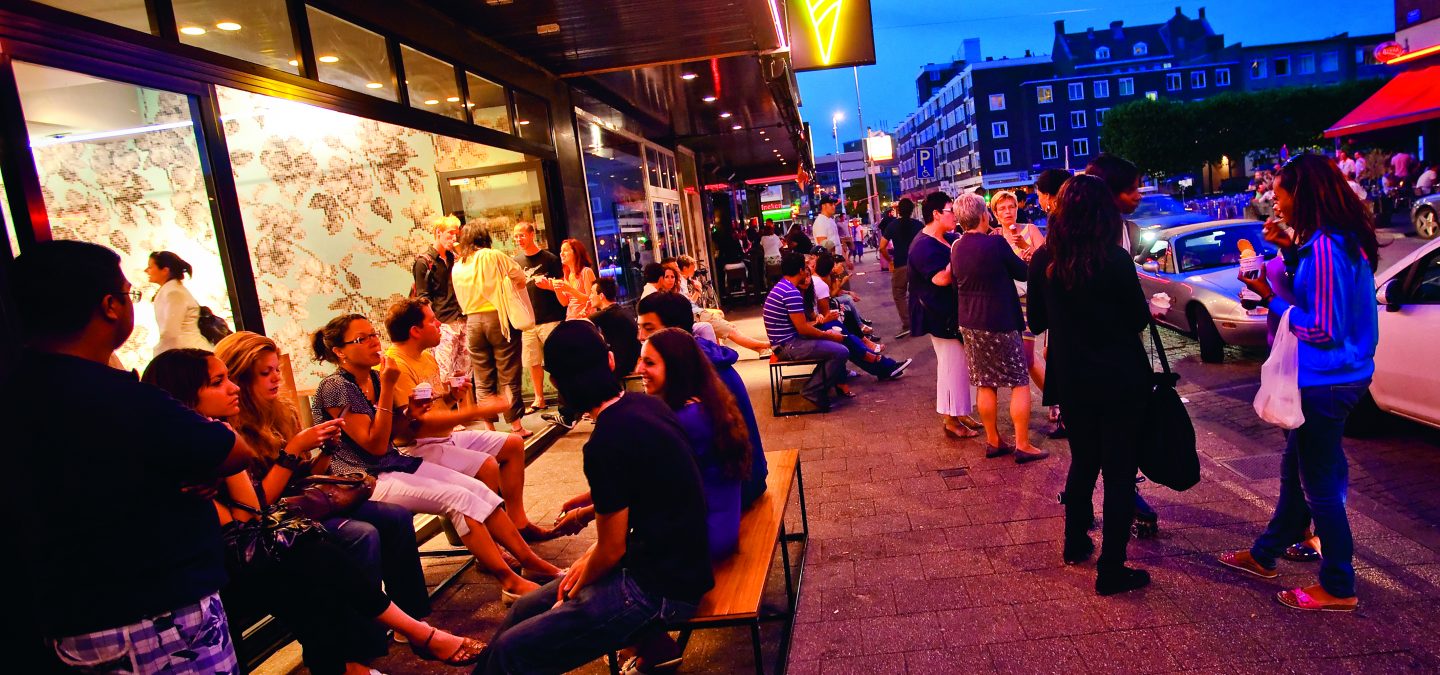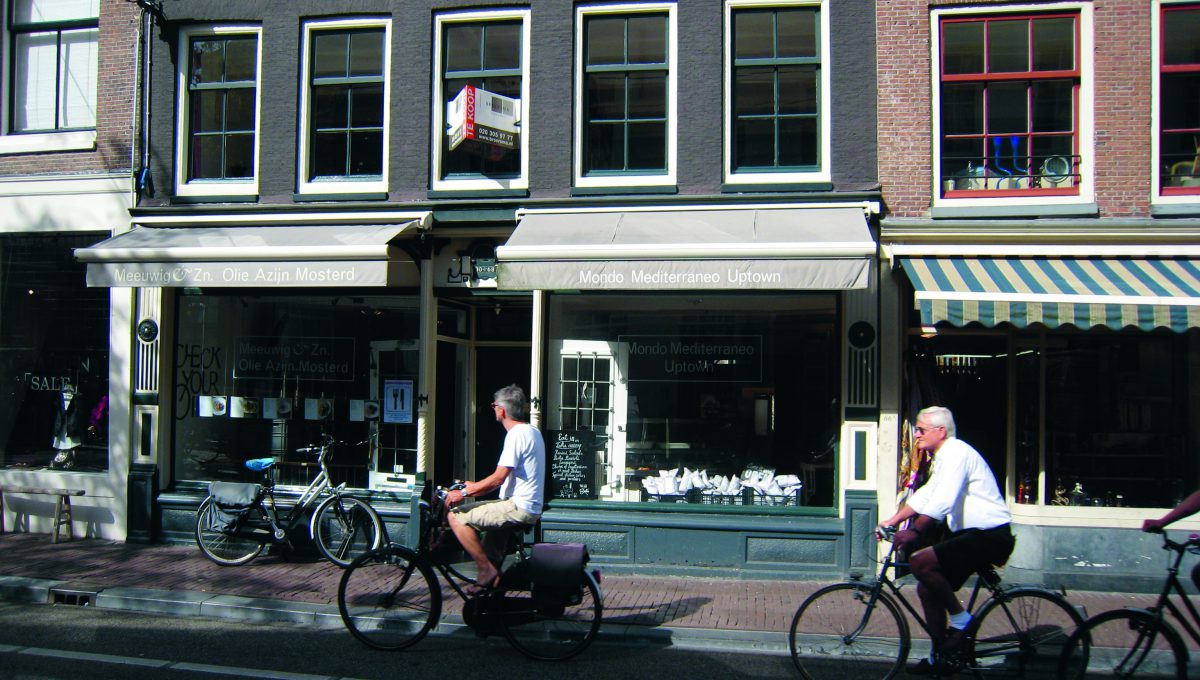
Keep up with our latest news and projects!

The Warm City exists at the intersection of observable physical and social aspects of city life. Our perceptions of people who use public space are one of the cornerstones of the warm city. For some people, the crowd in the inner city is just a nuisance because it blocks their way going from A to B. For these people, the city should be functional, a means of transport, from their office to their homes. For many others, the people in public space form a huge reservoir of diverse cognitive, tactile, emotional, esthetic, sensational, erotic, and relational experiences. In my book, The Warm City, I mainly focus on interactions between strangers (Goffman 1963, Lofland 1973), and what they experience, feel, and think during a diverse range of encounters, including fleeting interactions – quick eye-contact and the exchange of a few words or sentences – as well as more enduring interactions, such as intense discussions about sports, politics and flirting. In urban sociology, public city life generally tends to be described as cold, anonymous, and impersonal (Wirth 1938). With my research, I show a radically different perspective on urban public life. I listen to the voices of those who feel at home among strangers in the streets and squares of the city and analyze how this is related to a diverse range of interactions in the public realm.
I am especially inspired by Whyte’s work of public space in Manhattan (1988) and Lofland’s second book on the public realm (1998), where she states that mega-structures destroy vibrant public life and turn it into a bleak, sanitized version. In both studies, the plinths are considered to be an essential quality of a vibrant public space. Streets with accessible, transparent plinths, mostly related to the open façade of small stores, attract more people than streets without plinths with those qualities. To give a typical Dutch example from my book: in biking through the city, my respondents usually choose the busiest streets, because that was more fun. They wanted to watch the people walking and biking, and/or were just attracted to the lively atmosphere. They wanted to escape the dullness of streets with mega-structures. Even on their bike they would engulf themselves in the diversions of urban life.
 © Tot en met ontwerpen - Rotterdam Image Bank
© Tot en met ontwerpen - Rotterdam Image Bank
Cityscape matters, especially through small shops with an open character. One can see people shop, sit, drink, eat, argue, try on clothes, show off, be together as bored and frustrated couples, or as happy as one can be with one another. Because of the plinths, we have access to people and their presentation of self. It is not only the human comedy one can experience in these places. Seeing others is seeing oneself and thus becomes part of our ongoing identity-project (Giddens 1996). We compare ourselves to others, reject others with disdain, admire their impression, and even feel inspired to reproduce parts of the way others look, behave, and relate to another. One urbanite told me that she saw a couple walking hand in hand in such an intimate way that she thought of her own relationship and wondered if she could walk like that – so close – with her partner. It is not that we experience urban life from outside, but we are also part of it. People look at us, see us, talk to us, touch us, and smell us. It goes both ways. We are objects and subjects at the same time. We are connecting, interacting, sometimes strategically and sometimes without any conscious effort.
Plinths not only create a distinctive social experience but also a unique physical one. For instance because of open plinths we are penetrated by the smell of products that are sold, such as fresh bread, vegetables, flowers, coffee, and food from all corners of the world. And we also have the sensation of touching tomatoes, apples, shoes, clothes, books and so on. Another typical aspect of the physical experience of plinths is locomotion. In a street with small shops and open façades one can wander out of a shop into the street and vice versa. This goes with the sensation of choice, freedom, and individuality. One can follow the attraction one feels when passing a store. And there is also the autonomy of the quick escape; it is just a few steps away. A small shop with an open façade makes one feel connected to the city, the street, where one can experience the freedom of diversity, breathe fresh air and feel the sunshine.
 Haarlemmerdijk, Amsterdam
Haarlemmerdijk, Amsterdam
Public life is also about observing objects. It is the joy of looking at products we desire – beautiful, delicious, funny, remarkable, exotic goods. Looking at products through the window of a plinth can also become a collective experience; we want to share our findings with our friends. We talk about the music we like, the movies we want to see, people advice us, sometime strangers. In the interviews for The Warm City, and in related studies of semi-public places (such as corner shops, hairdressers, cafes and laundromats), another important aspect of these places comes to the foreground. These
places are the breeding grounds of small transient communities, which connect us to the city and make us feel at home.
The fundamental quality which is added to urban public life by small shops with open façades is its permeability, the partial integration of public (street) and private (shop). Small shops with open façades not only create the context for the warm city,
but allow for movement between the public and private. Public life makes it possible to traverse these borders and go from one experience into the other. This oscillation, this movement, creates an experience opposite of the cold, fixed, and static urban situation, where one feels stuck in non-involvement and estrangement. This movement creates interaction, meaning, histories, and narratives through which we become attached to the city, its possibilities, and its transformations.